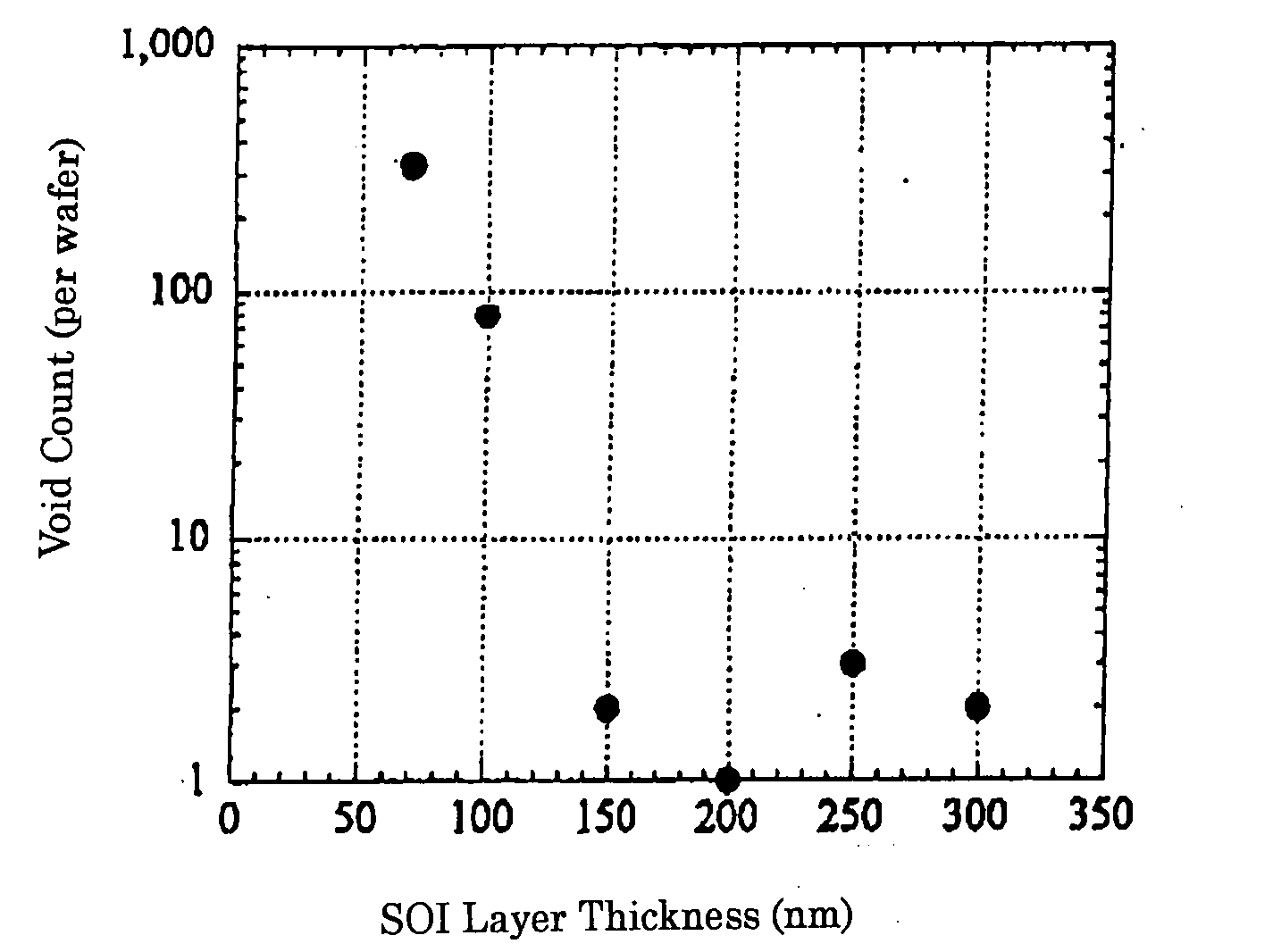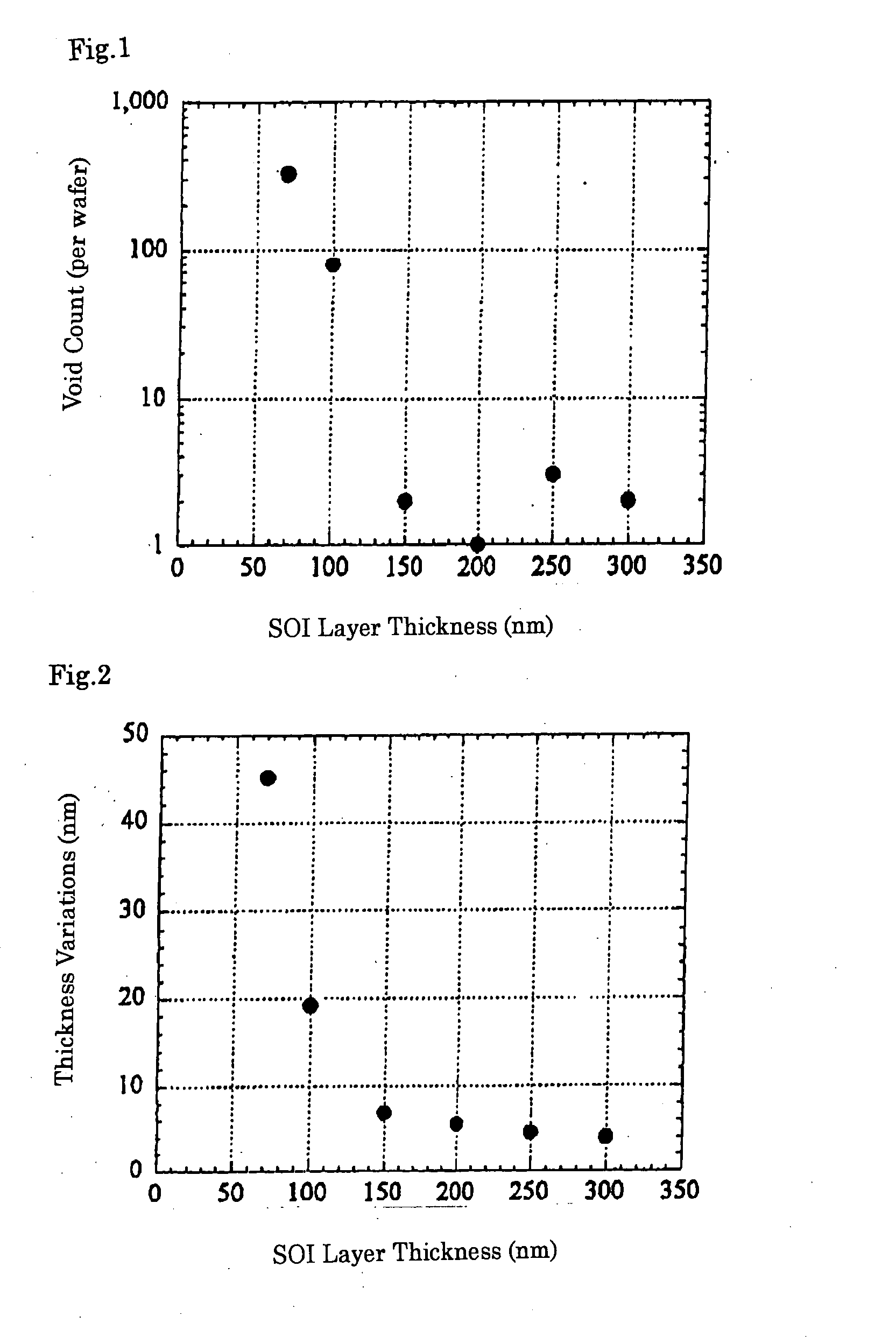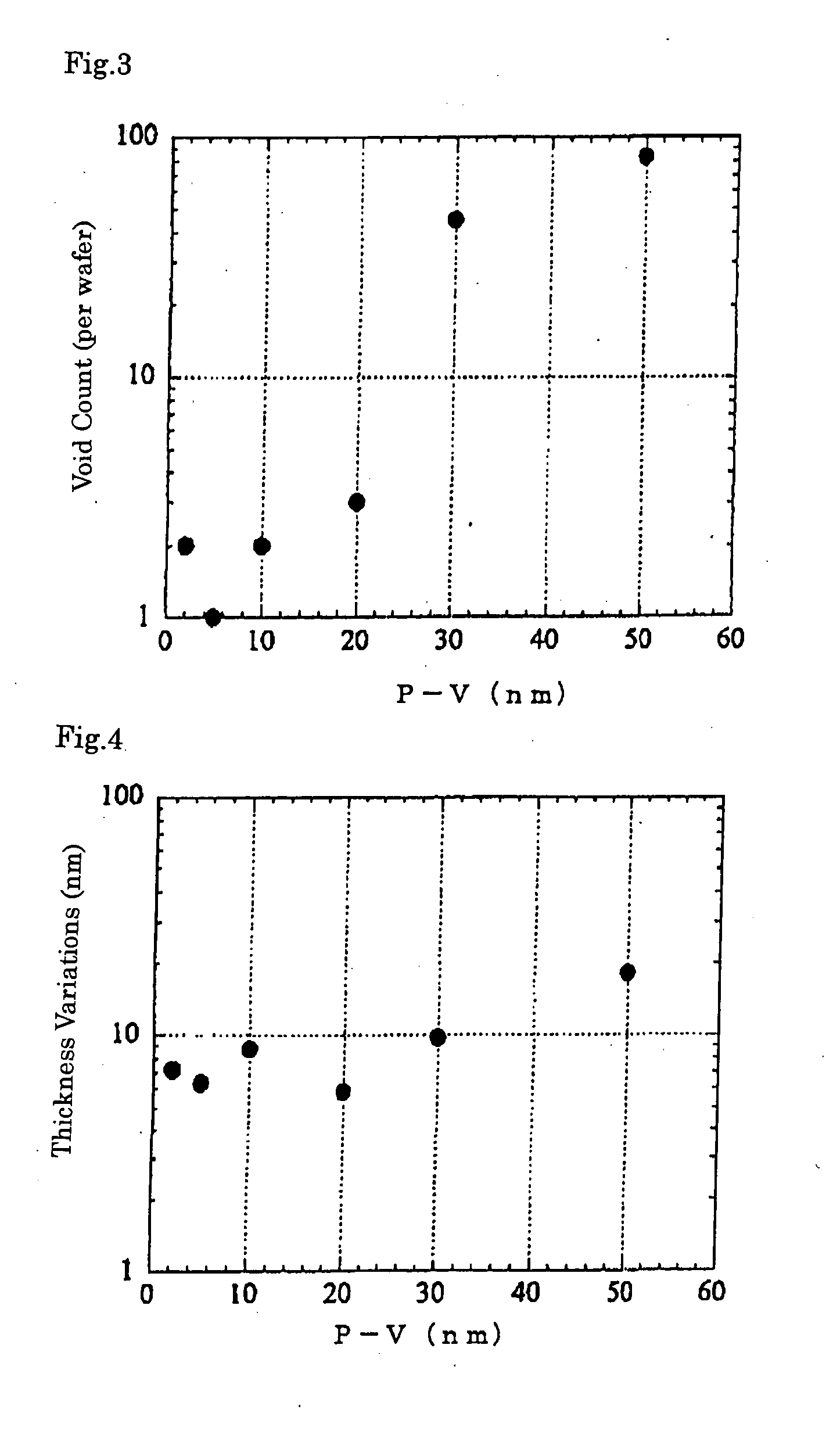Method for Producing Direct Bonded Wafer and Direct Bonded Wafer
a technology of direct bonded wafer and direct bonded wafer, which is applied in the direction of semiconductor/solid-state device manufacturing, basic electric elements, electric apparatus, etc., can solve the problems of insufficient reduction of void count, inability to produce direct bonded wafer, and inability to reduce void generation in the junction plane, so as to achieve low void generation and low void count
- Summary
- Abstract
- Description
- Claims
- Application Information
AI Technical Summary
Benefits of technology
Problems solved by technology
Method used
Image
Examples
examples 1 to 6
[0055]As a bond wafer, six Si wafers with a plane orientation of (110) and with a diameter of 12 inches (30.48 cm) were prepared. Each wafer underwent a heat treatment at 900 degrees C. for 5 minutes under a steam atmosphere to grow a 30 nm thick thermal oxide film on the surface of the bond wafer. Next, hydrogen ions were implanted to the respective bond wafers at an implantation depth of 400 nm. The bond wafers were superposed on six Si wafers with (100) which were prepared separately as base wafers via the thermal oxide film, respectively. The wafers underwent a heat treatment at 500 degrees C. for 30 minutes under nitrogen atmosphere to bond the wafers together, and also to separate the wafers at the hydrogen ion implanted layers. After that, a heat treatment at 1100 degrees C. for 1 hour under argon atmosphere was conducted to enhance bonding strength. At that moment, it was confirmed that generation of voids was reduced.
[0056]Then, the bond wafer sides of these wafers were thi...
examples 7 to 12
[0066]As a bond wafer, six Si wafers with a plane orientation of (110) and with a diameter of 12 inches (30.48 cm) were prepared. Each wafer underwent a heat treatment at 900 degrees C. for 5 minutes under a steam atmosphere to grow a 30 nm thick thermal oxide film on the surface of the bond wafer. Next, hydrogen ions were implanted to the respective bond wafers at an implantation depth of 400 nm. The bond wafers were superposed on six Si wafers with (100) which were prepared separately as base wafers via the thermal oxide film, respectively. The wafers underwent a heat treatment at 500 degrees C. for 30 minutes under nitrogen atmosphere to bond the wafers together, and also to separate the wafers at the hydrogen ion implanted layers. After that, a heat treatment at 1100 degrees C. for 1 hour under argon atmosphere was conducted to enhance bonding strength. At that moment, it was confirmed that generation of voids was reduced.
[0067]Then, the bond wafer sides of these wafers were thi...
example 13
[0077]As a bond wafer, Si wafer with (110) and with a diameter of 12 inches (30.48 cm) was prepared. The wafer underwent a heat treatment at 900 degrees C. for 5 minutes under a steam atmosphere to grow a 30 nm thick thermal oxide film on the surface of the bond wafer. Next, hydrogen ions were implanted to the bond wafer at an implantation depth of 400 nm. The bond wafer was superposed on a (100) Si wafer which was prepared separately as base wafers via the thermal oxide film. The wafers underwent a heat treatment at 500 degrees C. for 30 minutes under nitrogen atmosphere to bond the wafers together, and also to separate the wafers at the hydrogen ion implanted layer. After that, a heat treatment at 1100 degrees C. for 1 hour under argon atmosphere was conducted to enhance bonding strength. At that moment, it was confirmed that generation of voids was reduced.
[0078]Then, the wafer was thinned by CMP polishing to have an SOI layer thickness of 250 nm before an annealing process. PV v...
PUM
 Login to View More
Login to View More Abstract
Description
Claims
Application Information
 Login to View More
Login to View More - R&D
- Intellectual Property
- Life Sciences
- Materials
- Tech Scout
- Unparalleled Data Quality
- Higher Quality Content
- 60% Fewer Hallucinations
Browse by: Latest US Patents, China's latest patents, Technical Efficacy Thesaurus, Application Domain, Technology Topic, Popular Technical Reports.
© 2025 PatSnap. All rights reserved.Legal|Privacy policy|Modern Slavery Act Transparency Statement|Sitemap|About US| Contact US: help@patsnap.com



